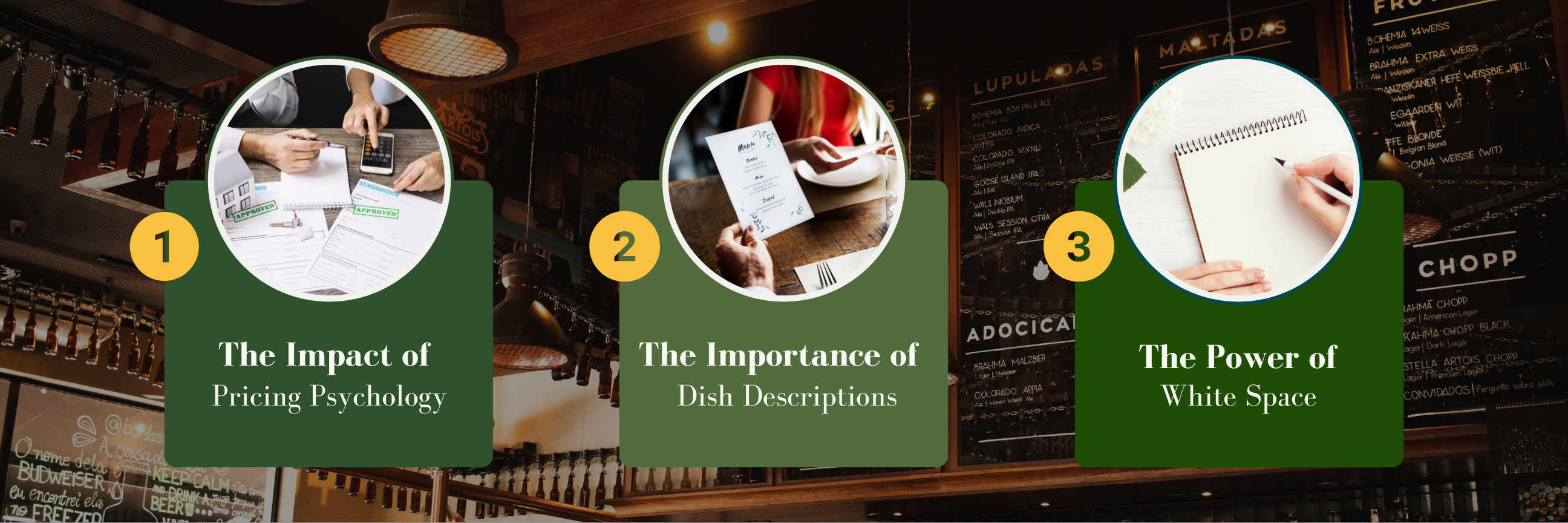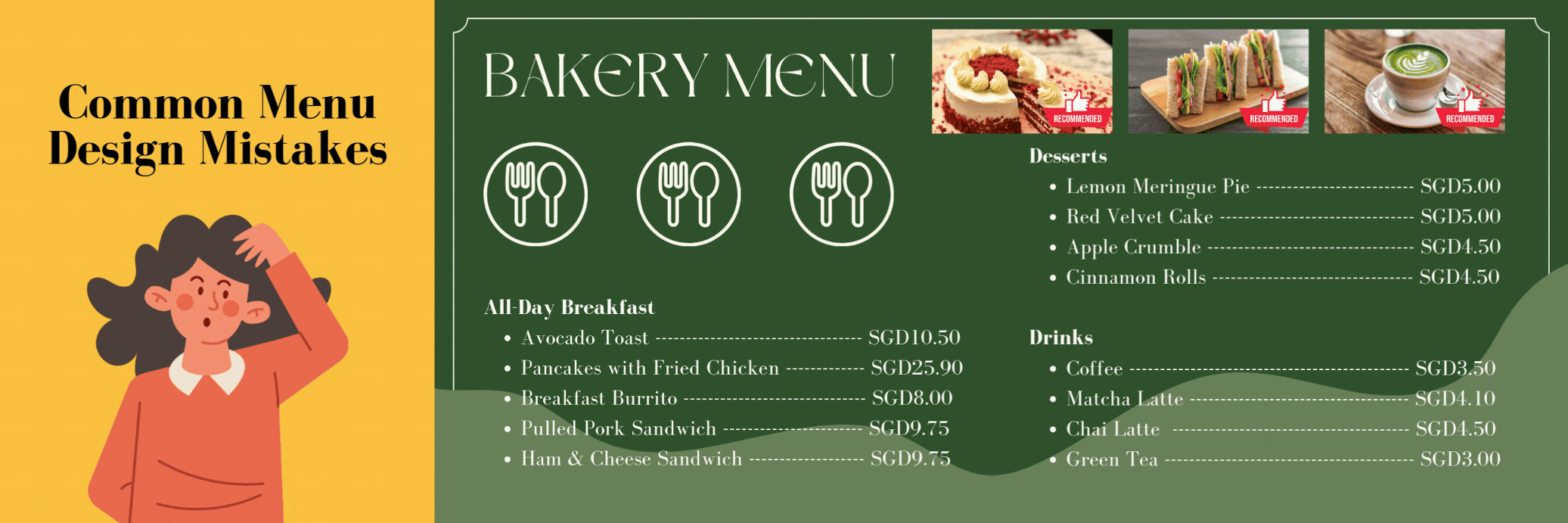Small Changes, Big Impact on Your Restaurant’s Success

When you walk into a restaurant, the menu is often the first point of interaction. It’s more than just a list of food options; it’s a strategic tool that can influence your choices, enhance your dining experience, and even impact the restaurant’s revenue.
Why Menu Engineering Matters
Recently, a diner at an economy rice stall in Sim Lim Square found herself confused when she was charged the “fish” price for a “pork” dish. The reason? The food labels and prices were missing from the dish trays, and the two items appeared quite similar to her. This incident highlights the importance of clear food labelling, ensuring that customers know exactly what they are paying for.
The Impact of Pricing Psychology
But it’s not just about what’s on the plate; how a menu is priced can also greatly influence customer decisions. Pricing psychology plays a pivotal role here. One of the most effective tactics is pricing items at “.99,” as studies have shown that prices ending in 99 are perceived as significantly lower, even though the difference is barely noticeable. This subtle trick gives customers the impression that they’re getting a better deal, nudging them towards spending without them even realising it. You may also have realised that some restaurants or cafes nowadays round off their prices to the whole number, which can make the menu feel less cluttered.
Alongside this, the presence of dollar signs can negatively affect how customers perceive pricing. Simply removing the “$” symbol can make prices seem less intimidating. This small change helps customers feel more comfortable with their choices, making them more likely to indulge in higher-priced or additional items.
The Importance of Dish Descriptions
Words have the power to evoke emotion and stimulate appetite. Describing a dish with mouth-watering adjectives can prompt customers to make a decision quicker. Instead of simply stating “Grilled Chicken,” consider replacing it with “Succulent, smoky grilled chicken drizzled in rich, tangy barbecue sauce.”
The Power of White Space: Less is More
One key technique in effective menu design is the use of white space. Think of it as breathing room on a menu – not only does it reduce visual clutter, but it also improves readability. Studies have shown that using more white space can enhance comprehension by up to 20%. This small tweak can significantly improve a customer’s ability to make a decision quickly and confidently, which in turn, helps to improve the turnover of a restaurant.

Menu Engineering is Key to Success
The menu is often an overlooked aspect of the dining experience, but it plays a pivotal role in shaping customer behaviour and enhancing restaurant revenue. From the use of white space to pricing strategies and the art of description, every detail matters. By investing in thoughtful menu design, you can ensure that your customers have a seamless, enjoyable dining experience that keeps them coming back for more.
Spot the Difference
To help you understand how these design principles come to life, we’ve created a sample café menu filled with common menu design mistakes. Take a moment to analyse the menu layout, design, and overall structure. Can you spot the differences? By identifying what works and what doesn’t, you’ll gain a deeper understanding of how menu engineering can truly influence the dining experience.

